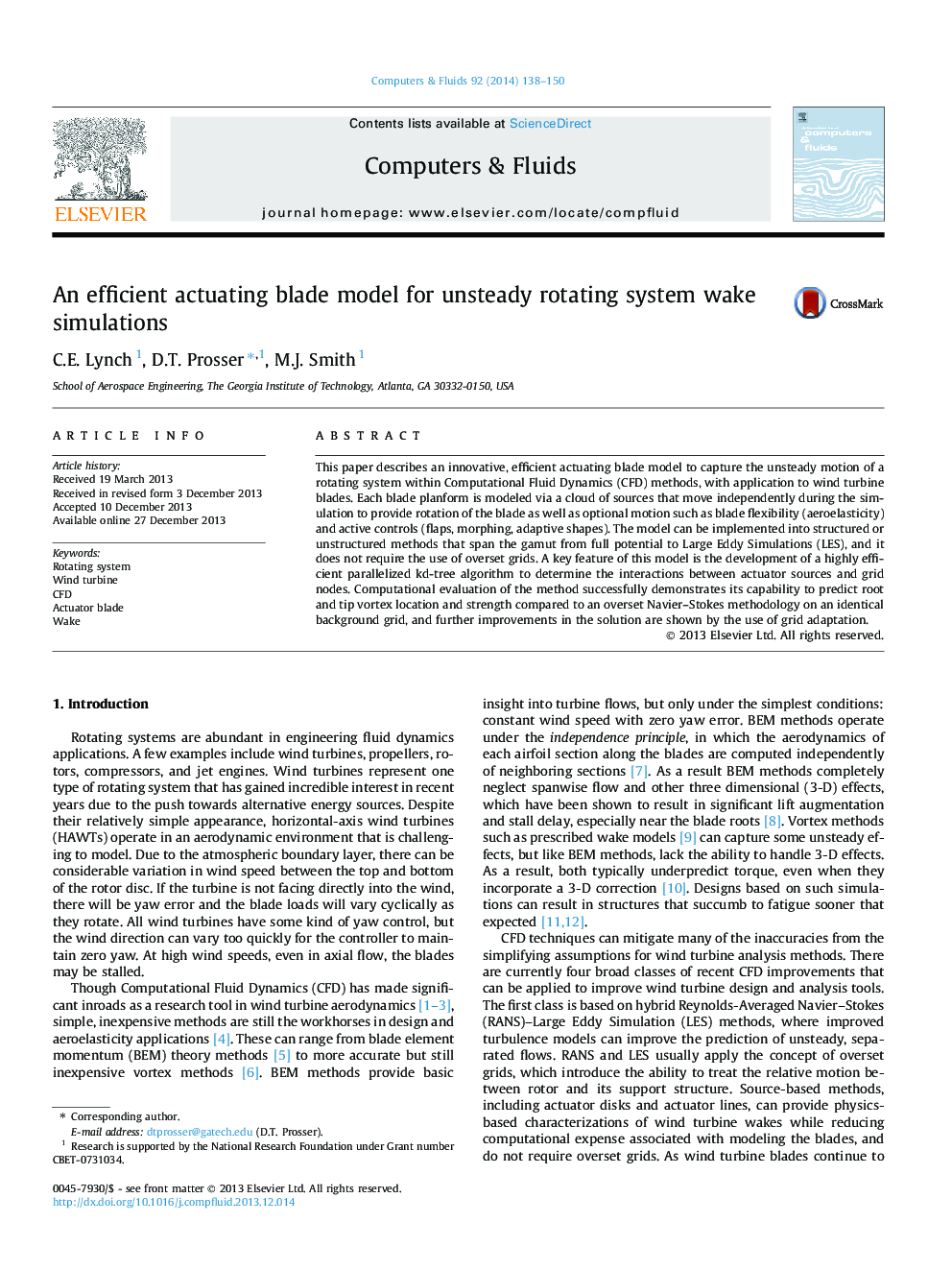| کد مقاله | کد نشریه | سال انتشار | مقاله انگلیسی | نسخه تمام متن |
|---|---|---|---|---|
| 761871 | 1462718 | 2014 | 13 صفحه PDF | دانلود رایگان |
• An actuator blade model is developed for simulation of unsteady rotating system wakes.
• A parallel kd-tree search locates the nearest grid node for each actuator source.
• The actuator blade model accurately predicts root and tip vortex trajectories.
• The actuator model computational cost was 20% of a comparable overset simulation.
• Grid adaptation is applied to efficiently improve the resolution of wake features.
This paper describes an innovative, efficient actuating blade model to capture the unsteady motion of a rotating system within Computational Fluid Dynamics (CFD) methods, with application to wind turbine blades. Each blade planform is modeled via a cloud of sources that move independently during the simulation to provide rotation of the blade as well as optional motion such as blade flexibility (aeroelasticity) and active controls (flaps, morphing, adaptive shapes). The model can be implemented into structured or unstructured methods that span the gamut from full potential to Large Eddy Simulations (LES), and it does not require the use of overset grids. A key feature of this model is the development of a highly efficient parallelized kd-tree algorithm to determine the interactions between actuator sources and grid nodes. Computational evaluation of the method successfully demonstrates its capability to predict root and tip vortex location and strength compared to an overset Navier–Stokes methodology on an identical background grid, and further improvements in the solution are shown by the use of grid adaptation.
Journal: Computers & Fluids - Volume 92, 20 March 2014, Pages 138–150
